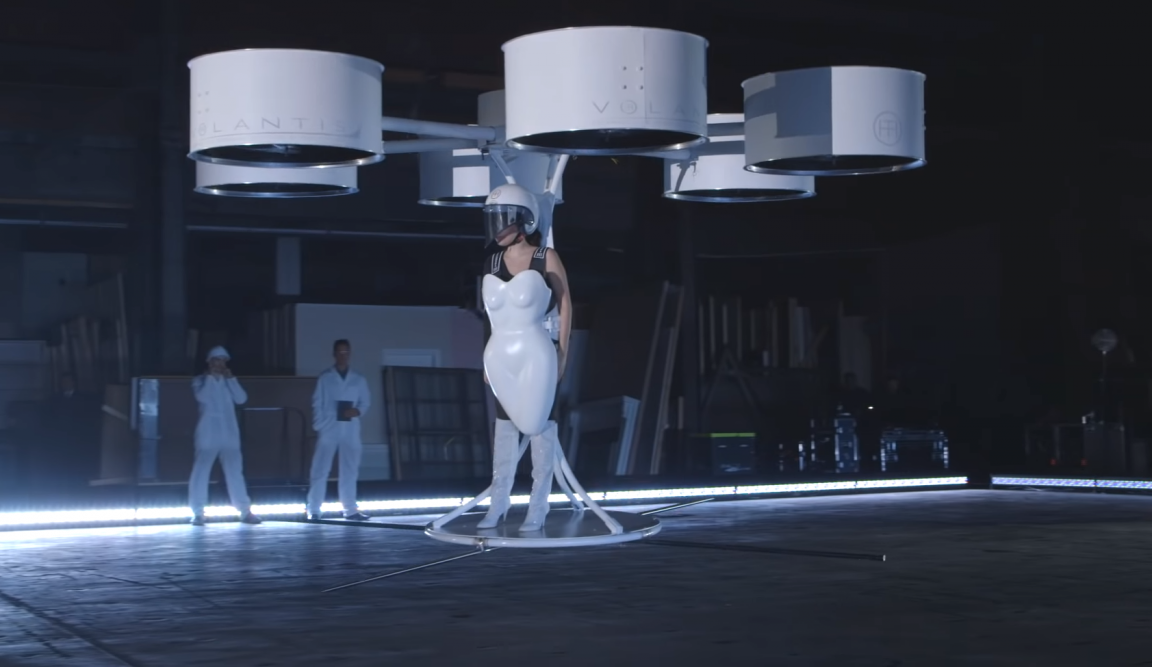Lady Gaga belongs in Cyberpunk 2077
There are many ways you can measure CD Projekt RED’s success, but here’s my favourite: when the studio started work on The Witcher, it brought in an unknown voice actor and sometime lecturer to take on the RPG’s lead role. Now that it’s embarking on a new series, Cyberpunk 2077, Lady Gaga has reportedly been spotted visited CD Projekt’s headquarters to get involved in motion capture. These are not the kind of pop star shoulderpads the Polish developers were rubbing up against in 2007, that’s for sure.
To some, the news signalled that CD Projekt RED was compromising the illusion of Cyberpunk’s Night City for the sake of a celebrity cameo. To quote VG247’s comments of the time: “Boycott Cyberpunk”, “way to ruin a game”, and “ugh.......”. Then again, to quote me: “that’s absolute bobbins.” Everything that Gaga represents only enhances the setting.
If A Star Is Born was an outlet for Gaga’s folksier side, then Cyberpunk is the perfect match for the glam-pop that made her the Fame Monster. Less 2016’s stripped-back album Joanne, and more the dance opus that came before it, Artpop - a messy, indulgent celebration of godlike celebrity and excess. That’s the world of Cyberpunk, too: a tabletop realm in which the best-known characters aren’t riffs on Frodo or Gandalf, but riff-writing musicians.
Johnny Silverhand - the guitarist whose “last ride” is mysteriously referenced on the radio in Cyberpunk 2077’s E3 demo - takes his name from his silver-chrome arm, a replacement for the one he lost in a corporate accident. It’s a story reminiscent of Black Sabbath’s Tony Iommi, who lost the tips of two fingers to factory work. In Iommi’s case, his augments were homemade thimbles, which he used to play slackened, heavier-sounding strings. Cyberpunk’s fantastical setting was rooted in our real-world metalheads, punks, and pop stars long before CD Projekt got to it.
Metal arms are a common sight in Cyberpunk, but not for the reasons you might assume. This is a world where cybernetics has advanced far past the point of exposed chrome - it’s perfectly possible to be packing an arsenal of curved blades and strength enhancements beneath the surface of unblemished skin. In other words, anybody showing off a shiny limb is doing exactly that: showing off. Where other RPGs are preoccupied with function, Cyberpunk is all about cool, particularly when it comes to the interplay between aesthetics and weaponry. In fact, ‘cool’ is actually an in-game stat like strength or mana in a traditional RPG.
There’s a song on Gaga’s Artpop named for the fashion designer Donatella Versace. It was her brother Gianni Versace who, in the 1980s that so influenced Cyberpunk, invented an ultra-light chainmail as a signature material, essentially introducing armour to women’s fashion. And, if you were ever invited inside the locked room deep in the fashion closet of Lady Gaga’s Malibu home, you’d find it filled with Gianni Versace designs. By the couch, meanwhile, a mannequin wears a spinal harness created by the jewelry designer and silversmith Shaun Leane. Clearly, Cyberpunk’s obsession with metal as fashion statement is one that Gaga shares.
“For me, fashion and art and music have always been a form of armour,” she told Vogue last year. “I just kept creating more and more fantasies to escape into, new skins to shed... I just remember feeling so irritated at the thought that I had to conform to being ‘normal,’ or less of whatever I was already born as. And so I took such radical enjoyment in expressing who I am in the most grandiose of ways... It was a form of protection, and a secret - like a wink from afar. I’m a monster, and you’re a monster too.”
For both Gaga and Cyberpunk, the freeing glamour of Madonna, Bowie, and Freddie Mercury intersects uncomfortably with the controlling interests of people with money. In pop stardom, art is subject to the whims of record labels - while in Night City’s ruthless corporate hellscape, record labels blackmail artists like Silverhand to keep them under the thumb. Cyberpunk 2077 is especially concerned with the cost of cool and celebrity: one too many cosmetic upgrades can cause a person to flip, losing their humanity, like the glamorous mass-murderer of the game’s original trailer.
Watch Gaga’s Netflix documentary Five Foot Two and you’ll see a pop star, a decade into her fame, accounting for the cost it’s had on her own connection to other people. “I’m alone, every night,” she says. “All these people will leave, and then I’ll be alone. And I go from everyone touching me all day and talking at me all day to total silence.” Gaga believes that years of touring and pressure have exacerbated her fibromyalgia, a syndrome typified by extreme nerve pain. This is a star all too aware of the suffering that has come in hand with her success.
One new idea CD Projekt has brought to Cyberpunk is ‘braindancing’, a way of living the digitally recorded memories of celebrities in a form of vicarious VR. It’s difficult to imagine somebody who understands both sides of that concept better than Gaga - a star who envisioned her own fame with perfect clarity long before anybody else could, and who has spent the decade since making it being recorded by journalists and photographers at every turn.
Whatever role Lady Gaga ends up playing in the eventual game CD Projekt puts out, she will augment it, lending style and weight like a gleaming chrome arm. Her presence amplifies the themes inherent in Night City, and if that means recording a glam-pop stomper for the soundtrack? That would be absolutely fine too. Gives us a performance to look forward to at The Game Awards.













